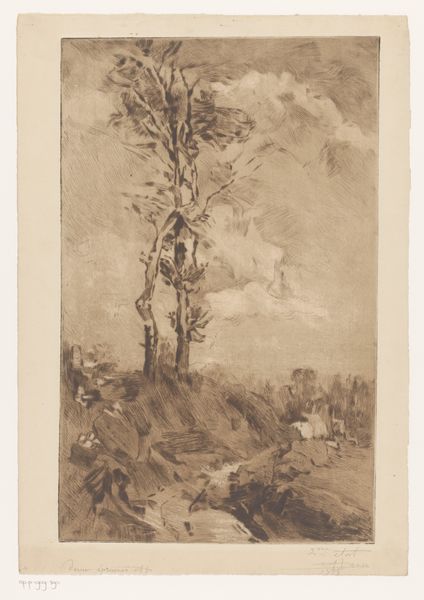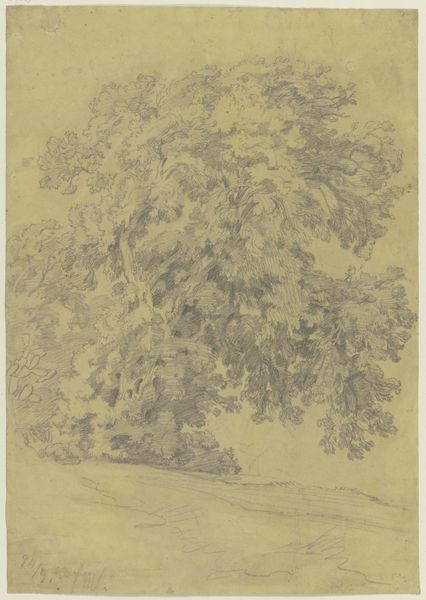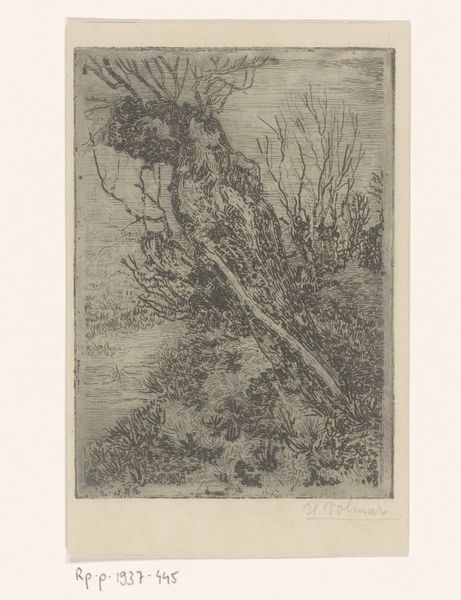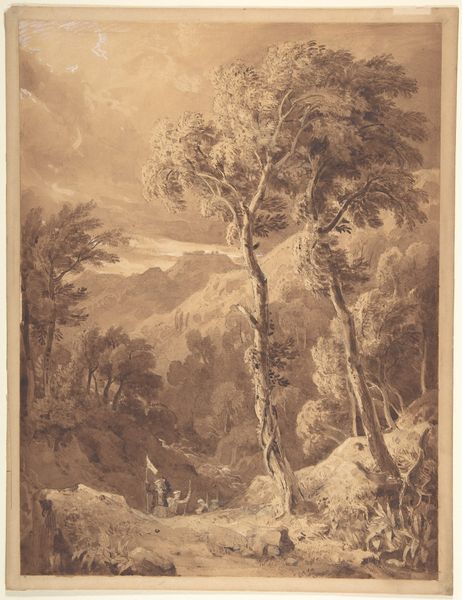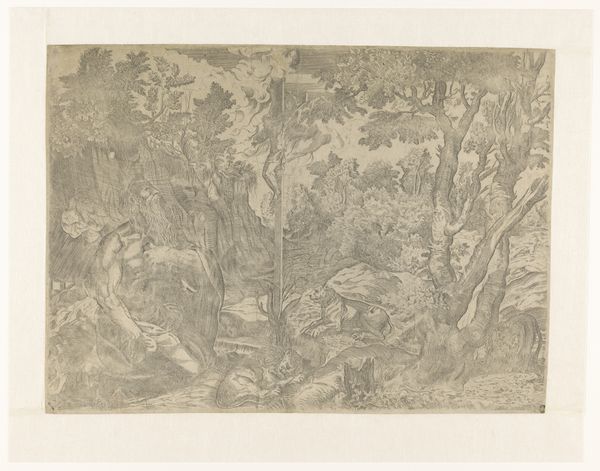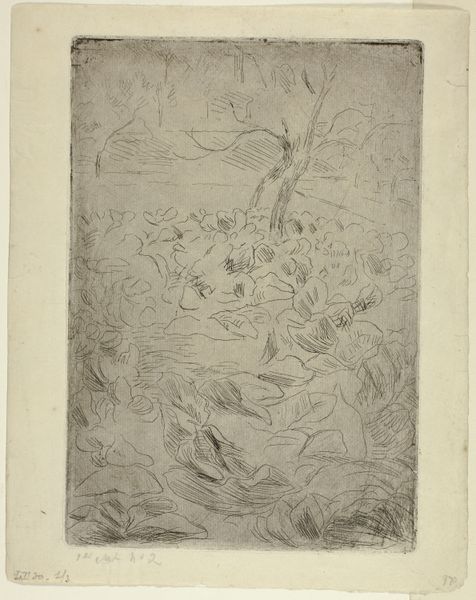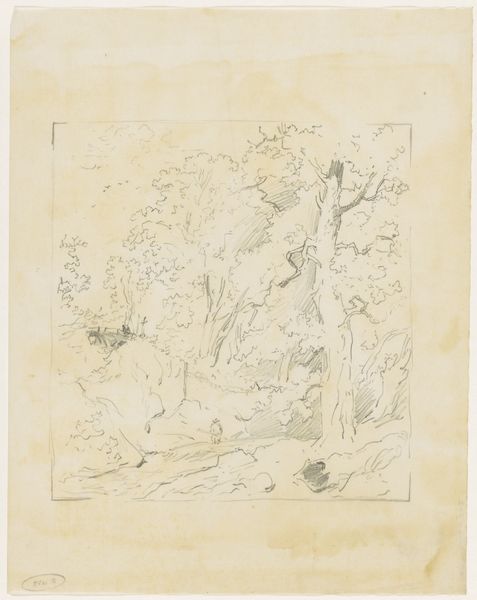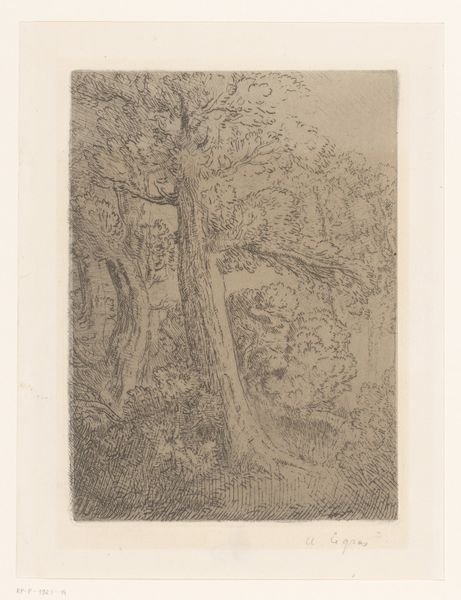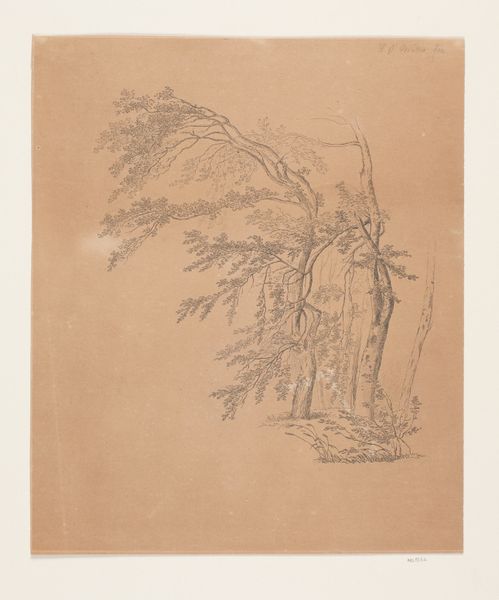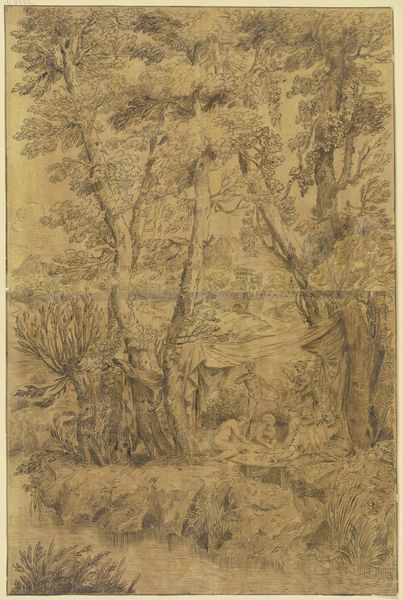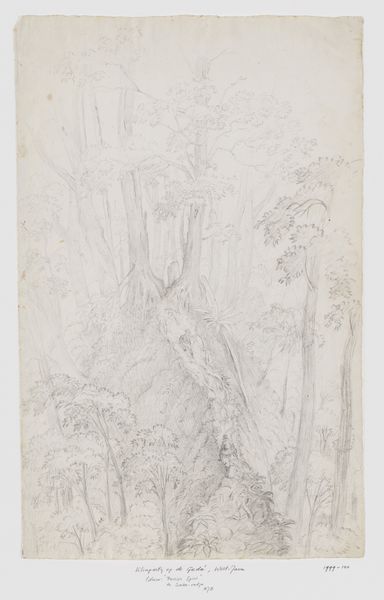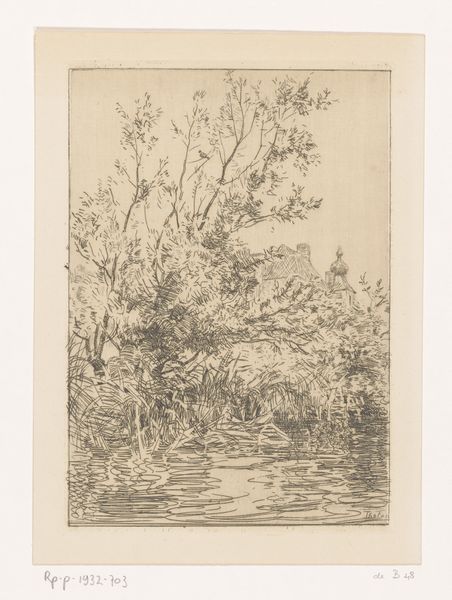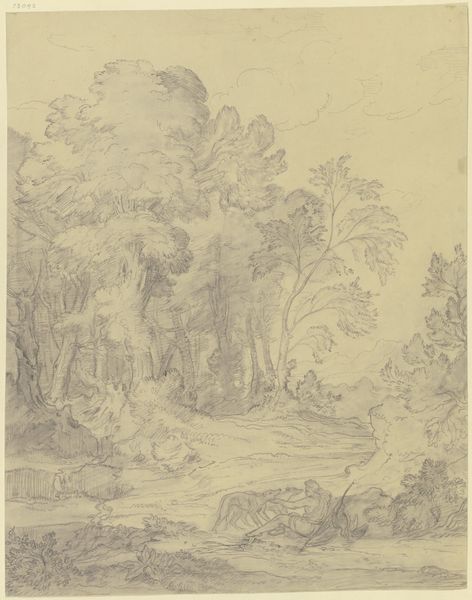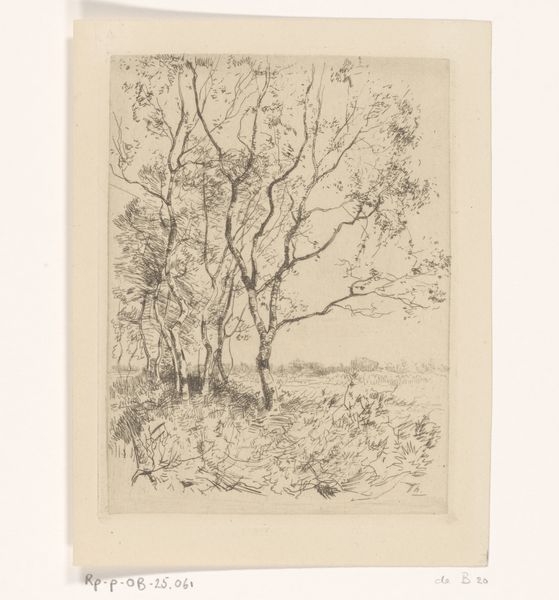
Dimensions: height 435 mm, width 272 mm
Copyright: Rijks Museum: Open Domain
Auguste Danse created this etching, titled 'Winter Landscape with Two Bare Trees,' in 1896. The image presents a bleak, windswept scene with a focus on the starkness of winter, reflective of a broader artistic interest in the natural and social world. Made in Belgium, this etching provides insight into the late 19th-century artistic milieu. The choice of a winter landscape could be seen as a comment on the hard realities of rural life, a theme prevalent in Realist and Naturalist art movements that sought to depict the unvarnished truth of everyday existence. It subtly critiques the romanticized views of nature. To fully understand this work, we might explore the socio-economic conditions of rural Belgium at the time, looking at how the art market supported such themes, and considering the institutional framework that defined artistic value. What was the role of the Salon in promoting this kind of work? How did the burgeoning art market influence the production and reception of landscape art?
Comments
No comments
Be the first to comment and join the conversation on the ultimate creative platform.
